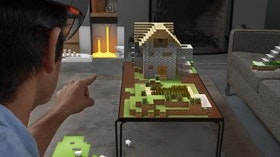Homepage
•
Learning Library
•
Blog
•
8 classroom uses for holographic technology
Expand breadcrumbs
Expand breadcrumbs
- Learning Library
- Blog
- 8 classroom uses for holographic technology
- Homepage
- •
- Learning Library
- •
- Blog
- •
- 8 classroom uses for holographic technology
8 classroom uses for holographic technology
By Team ISTE
January 22, 2015








